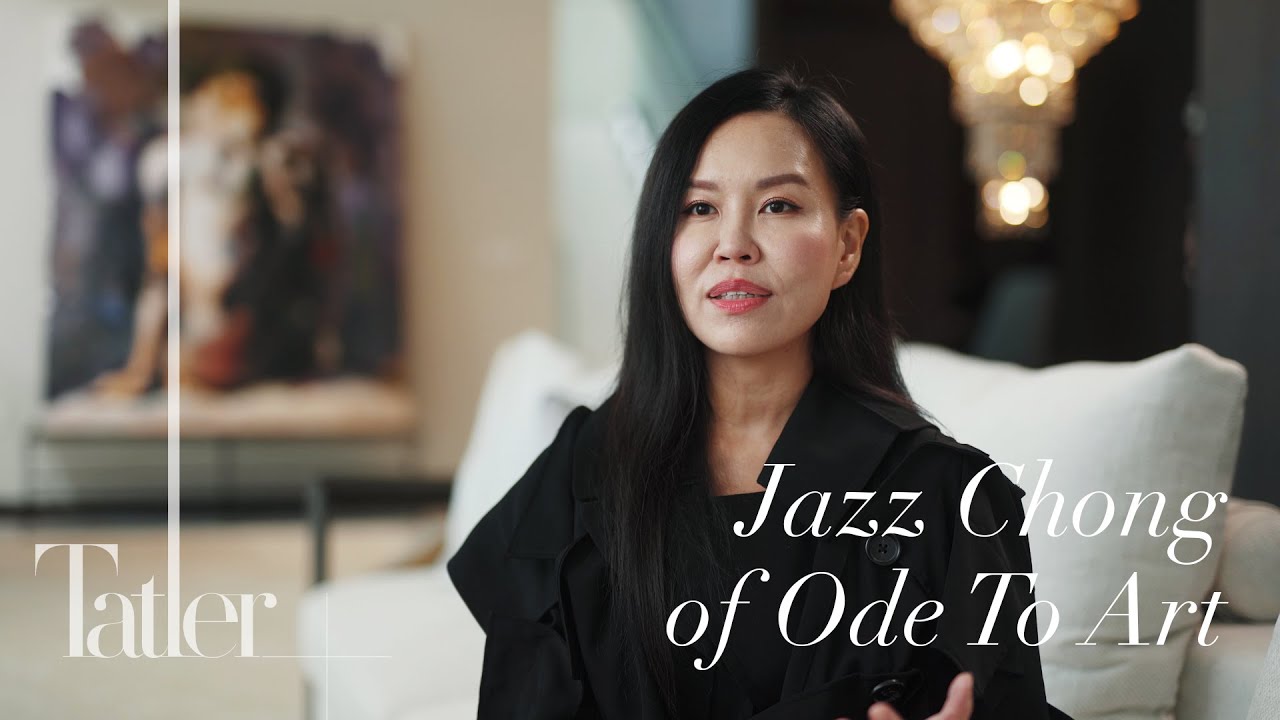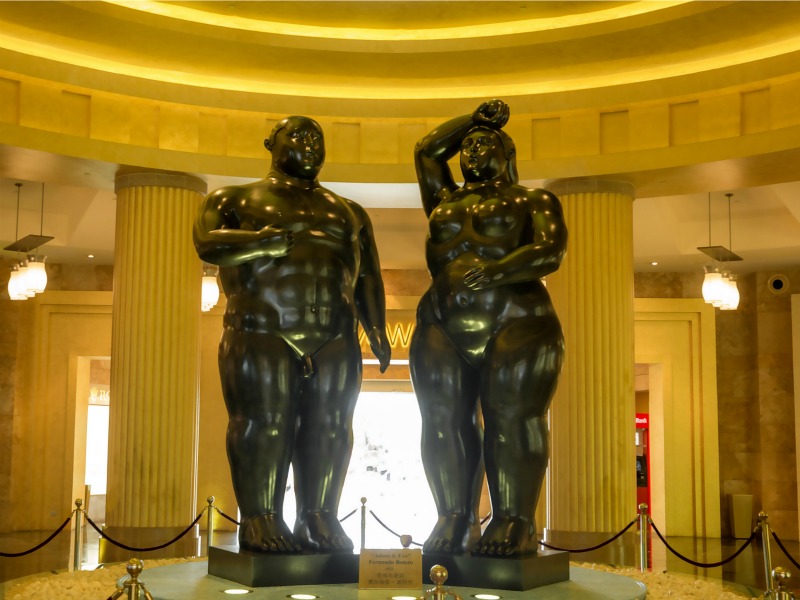
Art Guide
Fernando Botero and the debate about nudity in art
Recently, a visitor of Resorts World Sentosa voiced concerns about a nude Botero sculpture, sparking a debate about nudity in art. Read more to find out about the significance of nudity in the artistic world
By Serena

Fernando Botero, Adam and Eve, Bronze - displayed at Resorts World Sentosa, Singapore
Recently, a visitor of Resorts World Sentosa voiced concerns about Botero's “Adam and Eve” bronze sculpture in the lobby of Hotel Michael. Though it may seem like an isolated incident, his opinions are reflective of a larger community who are still uncomfortable with nudity in art and believe that there is no place for the bare body in paintings or sculptures.
He said:
“Their private parts are huge too”, “it should be small if it’s art”
Here’s what Botero has to say about his art:
“What I paint are volumes.…I am interested in volume, the sensuality of form.”
In the world of Fernando Botero, everything is plump. Bouquets of flowers are full and effusive, animals round and inflated, the bodies of men and women, large and rotund, characteristic of his signature style, “Boterismo”. There is thus no reason to believe that the artist wouldn’t portray every part of the human body with the same style, for aesthetic consistency.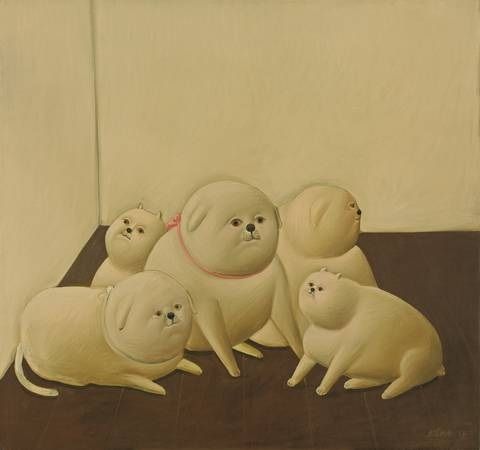
Fernando Botero, Perros, Oil on Canvas

Fernando Botero. The Bird, Bronze - displayed at UOB Raffles Plaza, Singapore
While Botero’s concerns are only with the sensuality of form, many proponents of the body positivity movement have interpreted his works to be a celebration of larger bodies, which until recently, were typically looked down upon in mainstream society.
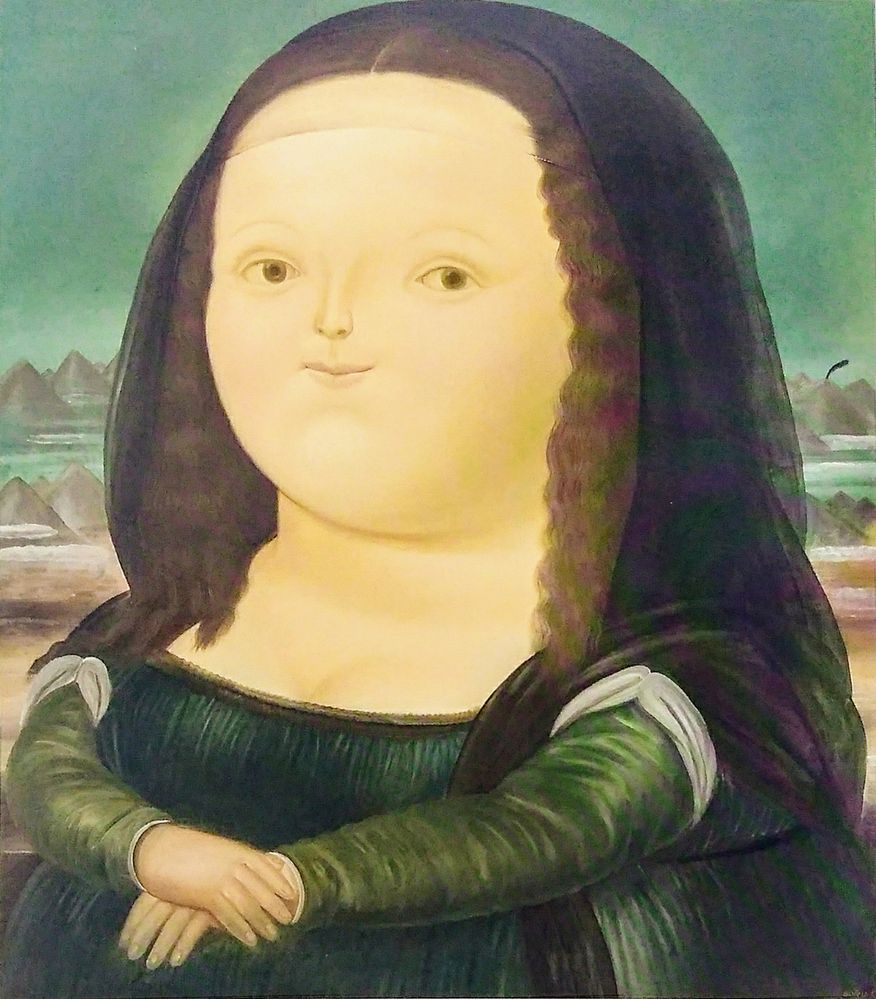
Fernando Botero, Mona Lisa, Oil on Canvas
Perhaps, it’s because Botero’s figures exude confidence, often filling up almost the entire canvas and assuming as much space as possible, gazing directly at the viewer and asserting a sense of authority. Every one of us has a body and every one of us was born naked, but for a myriad reasons, nudity has become a taboo in society. However, if we too choose to normalise nudity and embrace it with the confidence of Botero’s subjects, allowing the subject to take up space instead of sweeping it under the rug, nudity loses its sexual connotation, and returns to being natural.
The concerned visitor also wrote in on Stomp, an online citizen journalism platform, expressing:
There is certainly merit to the concern about exposing children to explicit materials before they gain the ability to comprehend it properly, but nudity and sexuality are not inherently indecent. While nudity can be indecent when unwarranted, it can also be positively associated with innocence, vulnerability and even comfort.
The concerned visitor also wrote in on Stomp, an online citizen journalism platform, expressing:
"The statues are indecent and there are so many children around”
There is certainly merit to the concern about exposing children to explicit materials before they gain the ability to comprehend it properly, but nudity and sexuality are not inherently indecent. While nudity can be indecent when unwarranted, it can also be positively associated with innocence, vulnerability and even comfort.
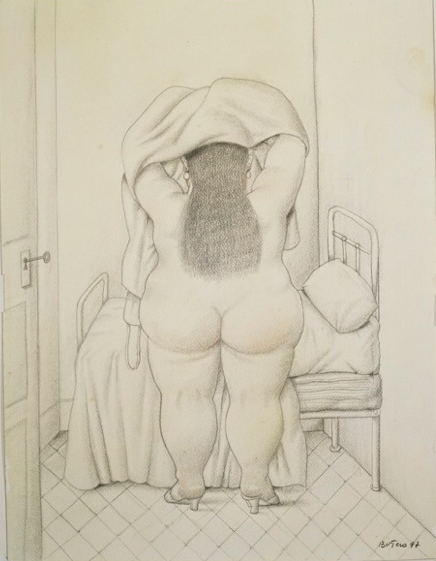
Fernando Botero, Woman Undressing, Charcoal on Paper
While the idea of nudity may be paradoxical to comfort for some, whose nudity remains within the bounds of the bathroom, take Botero’s Woman Undressing as an example. As she frees herself from the weight of her dress, perhaps the only thing that seems to be uncomfortable are the heels constricting her feet. Once she removes her shoes and her pearls, there is nothing stopping her from seeking respite under the sheets to be as comfortable as she can be, unfettered by anything else.
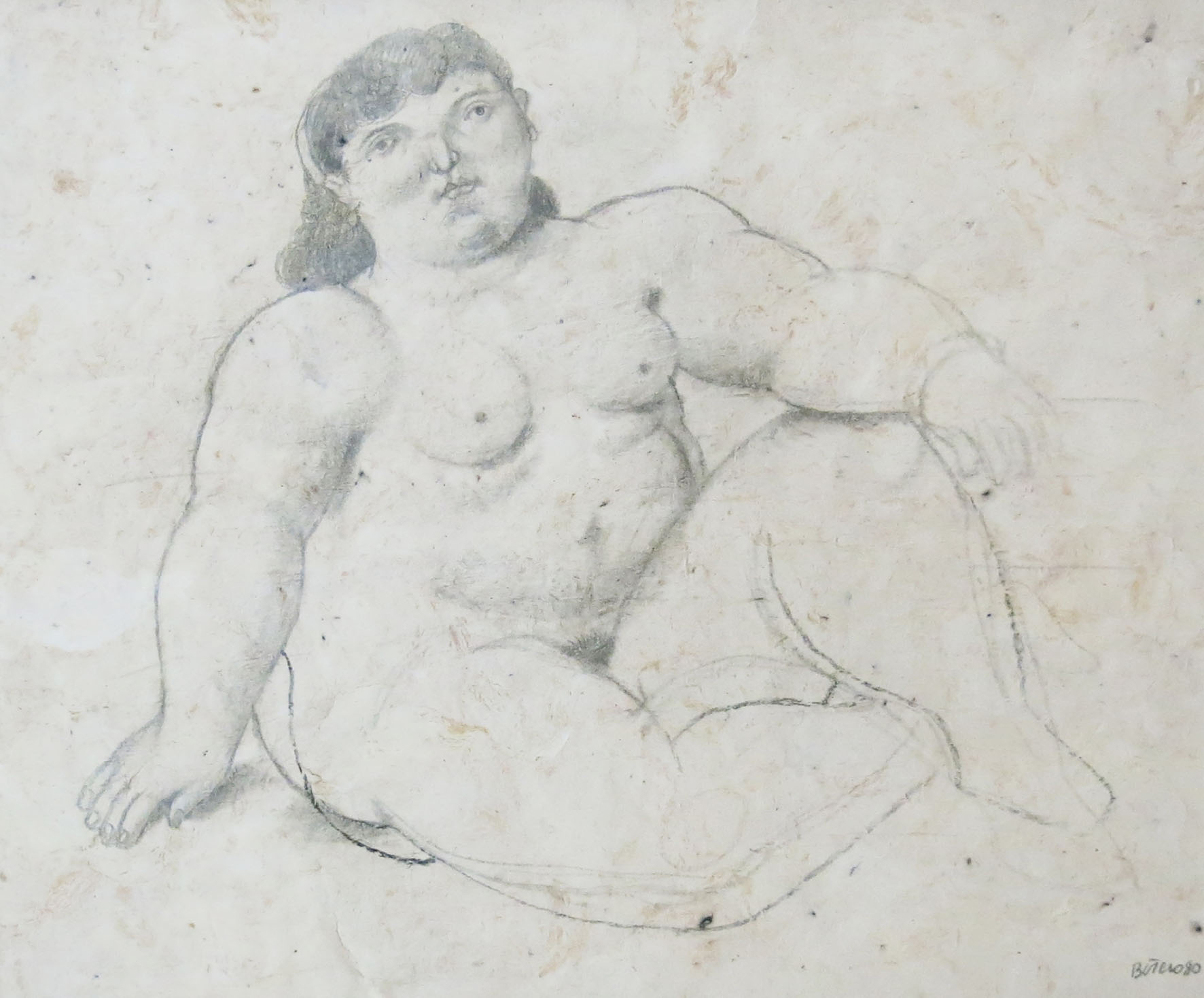
Fernando Botero, Naked Woman, Graphite on Paper
Not only are nude figures an essential tool in an artist’s practice to draw accurate human anatomy, they are also important expressive tools for artists. While fashion can be seen as a means of expression, it is also an indicator of the period which the subjects existed in. Nude figures, on the other hand, provide liberty for the artists to present subjects independent of their historical context, perhaps to communicate a message he deems universal to all men regardless of time. If clothing -- especially in Westernised societies, are symbols of individuality and identity, expressions of nudes can be perceived as the opposite, representative of our collective identity as human beings, uniting all as one. Nudity in art also reveals aspects of human expression in its rawest form, by allowing the artist to focus on the subject without the distraction of every fold, seam and wrinkle of the subject’s clothes.
The human body can be perceived as a beautiful thing to contemplate, which makes it a useful artistic tool, just as nature and landscapes lend themselves as important pieces in an artwork. Although the intentions of every artist may differ, one of art’s purposes is to explore ideas about the nature of humanity and man’s role in the world. Thus, would it not be natural to portray the unadorned human form in art?


.jpg)
